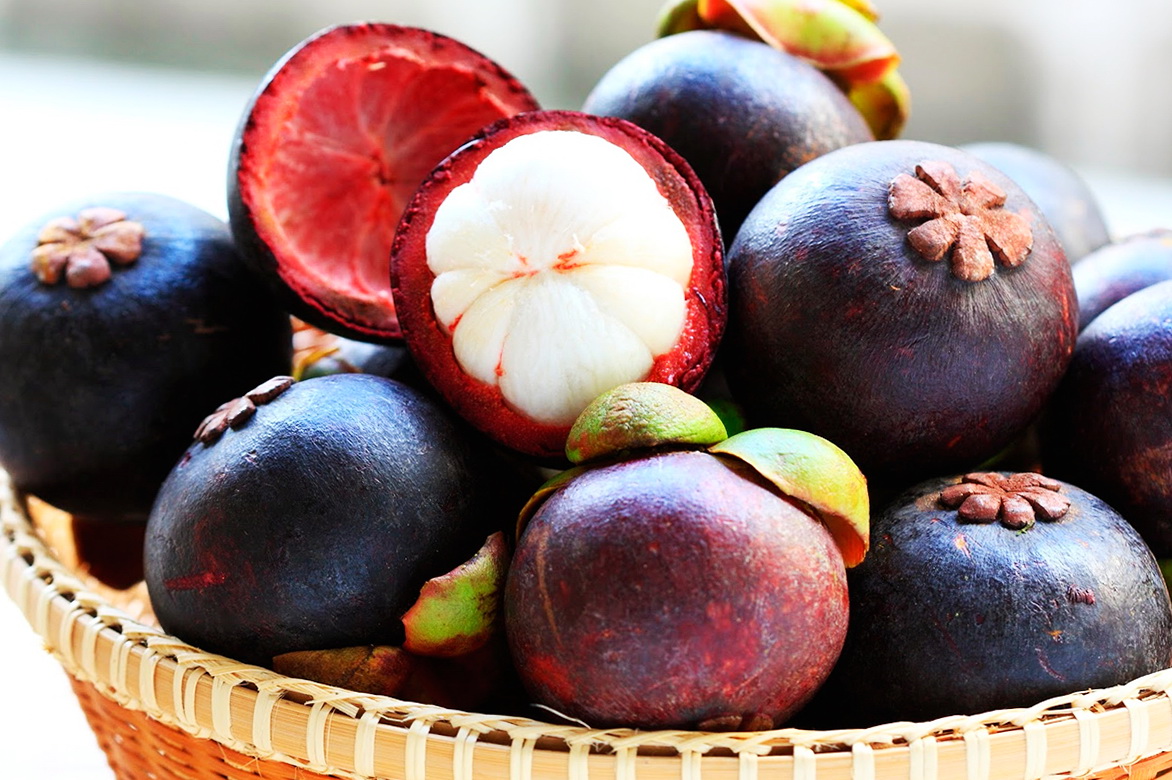Mangosteen - an exotic guest from Thailand

The mangosteen fruit has many names - mangosteen, mangosteen, mangut, manggis, garcinia, and others. It is native to Southeast Asia. Today the mangosteen is also cultivated in tropical countries of Africa and Central America. For its amazing taste and beneficial properties this fruit is also called the king of fruits of Thailand. It is this country that has become the world leader in exporting mangosteens.

Features of the fruit
The mangosteen is a rounded fruit that is purple or brown in color. Under the thick skin is an edible pulp. It looks like white garlic slices. Some of them have seeds, which can also be eaten. To know how many slices are hidden under the skin, just look at the floral pattern at the bottom of the fruit. The number of petals corresponds to the number of slices.
When choosing mangosteens, choose large fruit with bright green leaves. Smaller fruit have less flesh and brown leaves are a sign that the fruit has been sitting on the counter for a long time. You can check the ripeness of a mangosteen by pressing on it lightly. It should be soft and springy. If it is hard, it must be rotten. Green mangosteens are easy to identify by their color-their rind is light pink. Such fruit is sour inside.
The inside of the fruit is juicy and has an original taste - sweet, with a slight sourness. It has been compared to peaches, grapes, pineapple, strawberries, and even ice cream. The mangosteen is excellent for refreshing and quenching thirst. The only way to understand the characteristics of this fruit is to try it.

How to eat mangosteen
The flesh of ripe fruits can be freed from the skin by hand. To do this, the top of the mangosteen is lightly pressed until the skin is cracked. You can also use a knife and make a circular cut in the middle part of the fruit. Then the top part is removed, like a cap, exposing the pulp slices. The core is eaten with a fork or a spoon.
The mangosteen is a dessert that is usually eaten fresh. Processing reduces its flavor qualities. The pulp and juice of the fruit are also added to salads, yogurts, or ice cream for an exotic flavor. The fruit can be used to bake pies, make cocktails, and even sauces for meat. Some people make jam or jam from mangosteen pulp and jelly from the rind.
In the refrigerator, the fruit can remain unchanged for about two weeks, and in a room with low temperature and high humidity - a whole month. At room temperature, the fruit does not keep for long. It becomes hard and dry.

Useful properties of mangosteen
The mangosteen fruit is not only tasty but also healthy. It is low in calories (60 kcal per 100 g) and contains a small amount of sugars (16 g per 100 g). The fruit pulp is rich in trace elements (phosphorus, calcium, iron, potassium), vitamins B and C, antioxidants and flavonoids. Dried rind is used to produce tannins. Mangosteen is widely used for medicinal purposes:
- for the treatment of infectious diseases (dysentery, cholera);
- as an analgesic and anti-inflammatory (for bronchitis, cystitis, eczema, intestinal disorders);
- to strengthen the immune system;
- to maintain joint mobility;
- as an antidepressant;
- in the treatment of oncological diseases;
- as a sedative;
- for the prevention of senile dementia;
- as a means to lose weight.
This fruit has practically no contraindications. If you are trying it for the first time, start with a small amount in order to trace a possible allergic reaction.
Photos of the mangosteen can't do justice to its unique taste. Once you taste it, you'll agree that it's worthy of the royal title.











